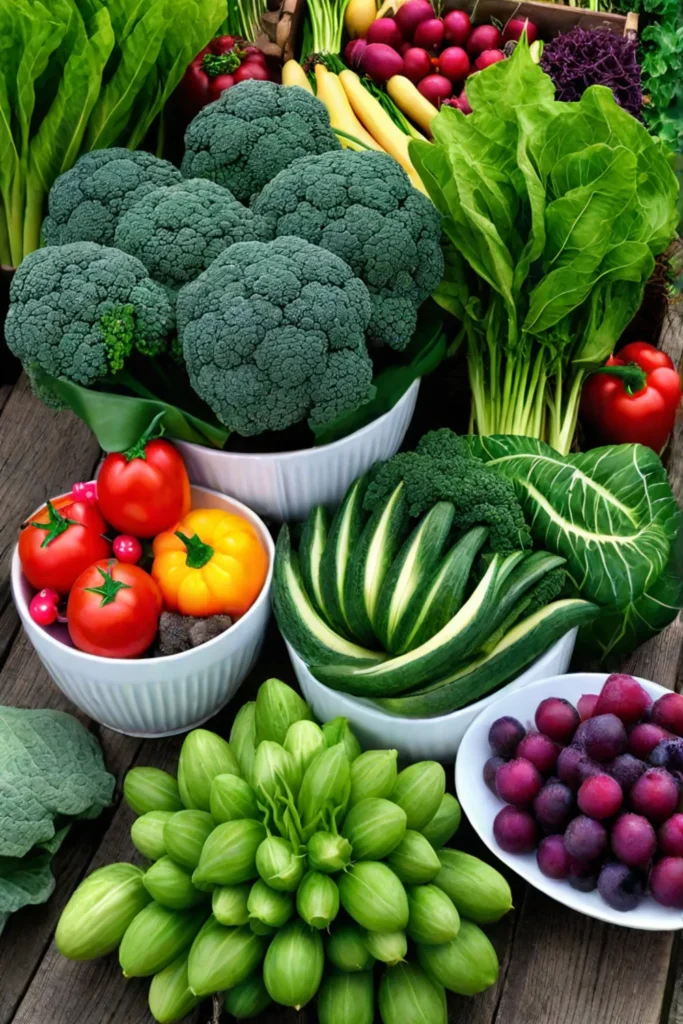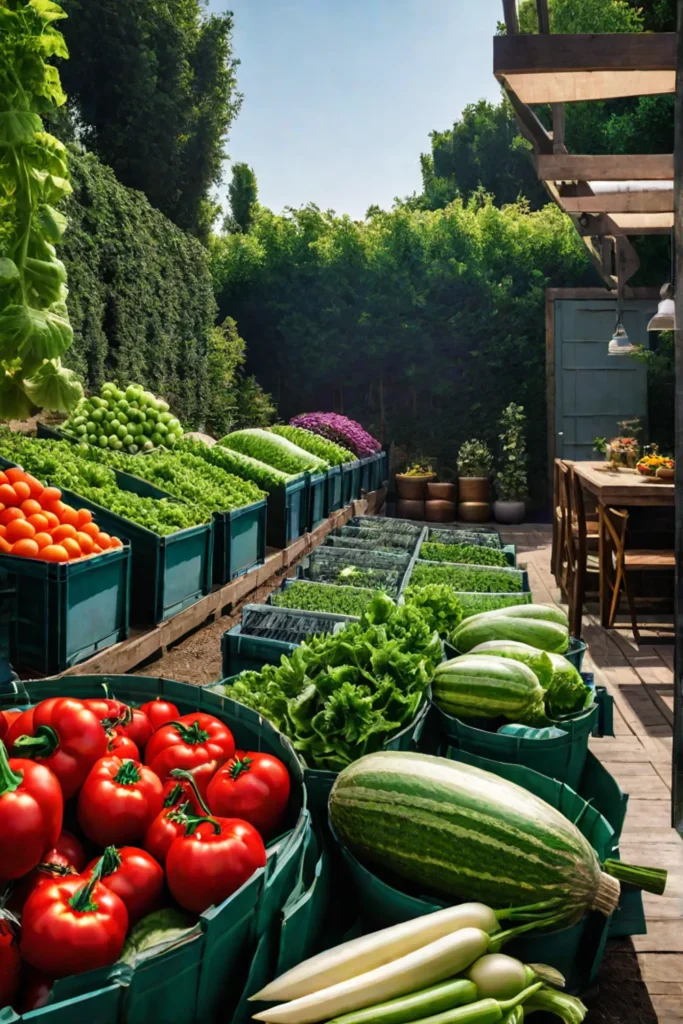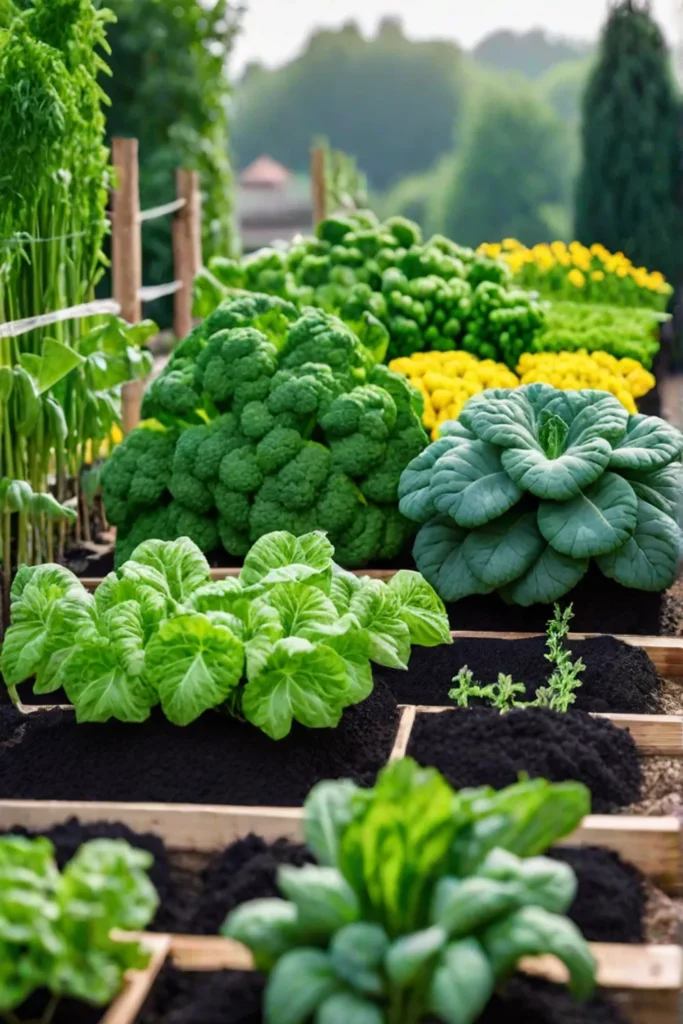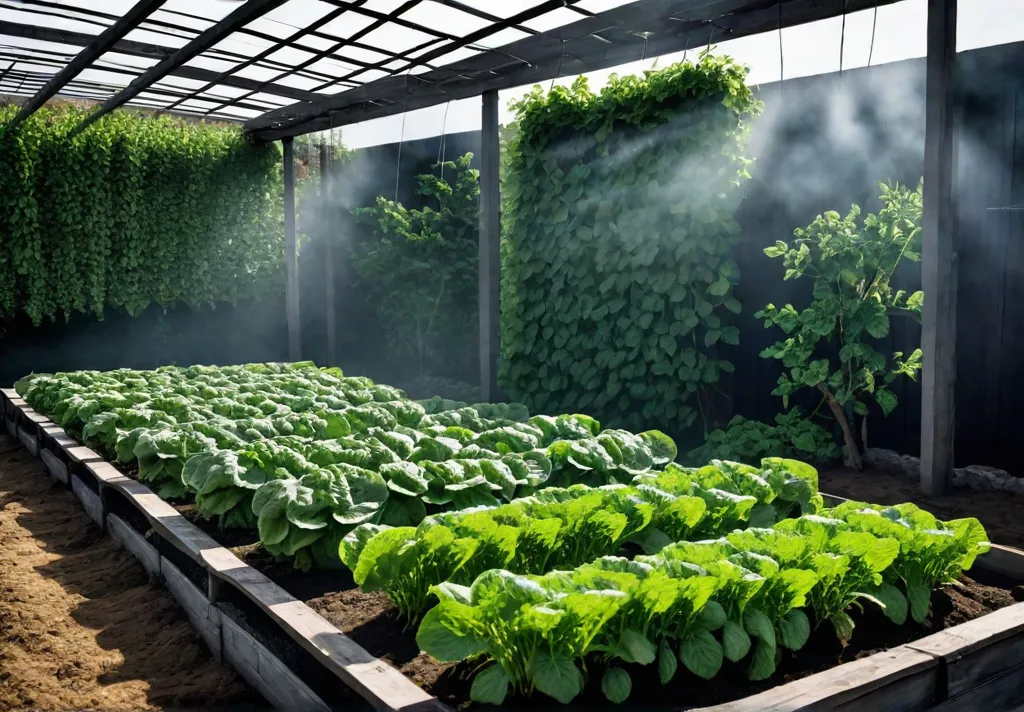As a home decorator and DIY enthusiast, I know how important it is to create a thriving, productive vegetable garden. And you know what’s the secret ingredient to a bountiful harvest? Sunlight! That’s right, the same sunlight that warms our homes and nourishes our lawns is crucial for the growth and development of your vegetable plants.
Did you know that a whopping 75% of all homeowners with a garden grow vegetables? That means a lot of folks are trying to maximize their veggie yields. And let me tell you, understanding how to optimize sunlight exposure is key to their success.
Sunlight is the primary source of energy for photosynthesis, the process that allows plants to convert light into the nutrients they need to grow and thrive. Without the right sunlight, your tomatoes, peppers, and leafy greens won’t reach their full potential.

But don’t worry, my fellow green-thumbed friends. In this article, I will share my top strategies for making the most of the sunlight in your vegetable garden. Whether you’ve got a sunny southern exposure or a partially shaded plot, you’ll learn how to assess your conditions, choose the right plants, and implement smart planting techniques to ensure your veggies soak up every last ray.
So, let’s dive in and unlock the full potential of your vegetable garden with the power of sunlight!
Understanding the Importance of Sunlight for Vegetable Gardens
As I mentioned, sunlight is the driving force behind photosynthesis, allowing plants to convert light into the energy they need to grow and produce fruits and vegetables. Without enough sunlight, your plants will struggle to thrive, resulting in stunted growth, reduced yields, and lackluster flavor.
Different vegetable varieties have varying sunlight requirements, too. For example, tomatoes and peppers need at least 6 hours of direct sunlight per day to shine, while leafy greens like lettuce and spinach can get by with a bit more shade. Understanding these unique needs is crucial for planning a productive and bountiful garden.

The intensity and duration of sunlight exposure can also affect your veggies’ development, yield, and even nutrient content. Higher sunlight levels can lead to more intense flavors and higher nutrient levels, but too much direct sun can also cause stress and damage to your plants.
So, as you can see, sunlight is a critical factor in the success of any vegetable garden. By learning how to assess and optimize the sunlight conditions in your plot, you’ll be well on your way to growing the healthiest, most flavorful produce around.
Evaluating and Maximizing Sunlight Exposure
The first step in optimizing sunlight for your vegetable garden is to evaluate the existing conditions. This means looking closely at how much direct sunlight your garden receives throughout the day and during the seasons.
One handy tool is a sun tracking app, which can use your garden’s location to map out the sun’s path and intensity. You can also observe your garden over time, noting which areas get the most (and least) sunlight.
Once you’ve figured out your sunlight situation, it’s time to adjust to maximize that precious energy. One effective strategy is to position taller crops, like corn or pole beans, on the north side of your garden. This allows the shorter plants, like lettuce or radishes, to soak up all the sunlight they need on the south side.

You can also use companion planting techniques to create microclimates that optimize sunlight exposure. For example, planting tomatoes and basil together can help both plants thrive, as the basil’s scent helps repel pests that could harm the tomatoes.
And don’t forget about vertical growth! By training your vining vegetables, like cucumbers or pole beans, to climb trellises or cages, you can free up valuable garden real estate and ensure they get the sunlight they crave.
Selecting the Right Vegetable Varieties
Now that your sunlight situation is dialed in, it’s time to choose the right vegetable varieties for your garden. As I mentioned, different plants have different sunlight needs, so matching your selections to your growing conditions is important.
For gardens with full sun (6-8 hours of direct sunlight daily), you’ll want to focus on sun-loving veggies like tomatoes, peppers, squash, and beans. These guys thrive in those bright, sunny conditions.

On the other hand, if your garden is a bit shadier, you’ll want to look for partial shade-tolerant varieties, such as lettuce, kale, and chard. For those dappled light areas, leafy greens like spinach and arugula can be great choices.
By selecting the right plants for your sunlight conditions, you’ll ensure that your veggies have the energy they need to grow big, strong, and full of flavor. It’s all about finding that perfect match between your garden’s sunlight and vegetable varieties.
Protecting Plants from Excessive Sunlight
While sunlight is essential for your vegetable garden, too much of a good thing can be detrimental. Excessive sunlight, especially during the hottest parts of the day, can cause stress and damage to your plants.
Look out for signs of sunlight stress, like wilting, discoloration, or sunscald (a sunburn-like condition). If you notice these issues, it’s time to protect your plants.

One effective solution is to use shade cloths or row covers to create a protective barrier against the sun’s intense rays. These lightweight, breathable fabrics can be easily draped over your garden beds or individual plants to provide much-needed relief.
You can strategically place taller plants, like tomatoes or corn, to create natural shade for more sensitive veggies, like lettuce or spinach. This helps maintain a balanced microclimate in your garden, keeping your plants happy and healthy.
Adapting to Changing Sunlight Conditions
One of the things I love most about gardening is the constant change and adaptation required. And when it comes to sunlight, that’s especially true. The angle and intensity of the sun can shift dramatically throughout the seasons, and even unexpected events, like the growth of nearby trees or the construction of a new building, can alter the sunlight conditions in your garden.
That’s why it’s important to stay vigilant and continuously monitor the sunlight in your vegetable plot. Keep a garden journal to track changes in sunlight exposure, plant growth, and yields. This will help you identify patterns and make informed decisions about adjusting your planting strategies.

You might need to rearrange your garden layout as the seasons change, move taller plants to different locations, or add temporary shade structures to protect your more delicate veggies. And if you notice significant, long-term changes in your sunlight conditions, don’t be afraid to reevaluate your plant selections to ensure they’re still a good fit.
Adapting to these dynamic sunlight conditions takes work, but trust me, it’s worth it. By staying on top of the changes in your garden, you’ll be able to keep your veggies thriving and productive, no matter what Mother Nature throws your way.
Wrapping Up: Unlocking the Power of Sunlight
Well, there you have it, my fellow gardening enthusiasts! By understanding the importance of sunlight, assessing and maximizing your garden’s exposure, selecting the right vegetable varieties, and adapting to changing conditions, you’ll be well on your way to unlocking the full potential of your vegetable garden.

Sunlight is key to healthy, flavorful, and bountiful produce. So, get out there, put these strategies into practice, and watch your garden flourish like never before. Who knows, you might even become the envy of the entire neighborhood with your sun-kissed veggies!
If you have any other questions or need further guidance, please drop me a line. I’m always happy to share my expertise and help fellow gardeners like you create the vegetable oasis of their dreams. Happy planting!










